Thousands of seabirds die in New Zealand fisheries every year.
Many more deaths are caused by fishing boats off the coast of South America, and others working the high seas in the Pacific.
The global toll of seabirds dying as a result of fisheries by-catch is estimated to be nearly three-quarters of a million birds.
To try and stop the deaths of seabirds such as petrels and albatrosses, New Zealand is working with fishers, , the fishing industry and with international collaborators to find effective ways to prevent birds getting caught on hooks and drowned in nets.
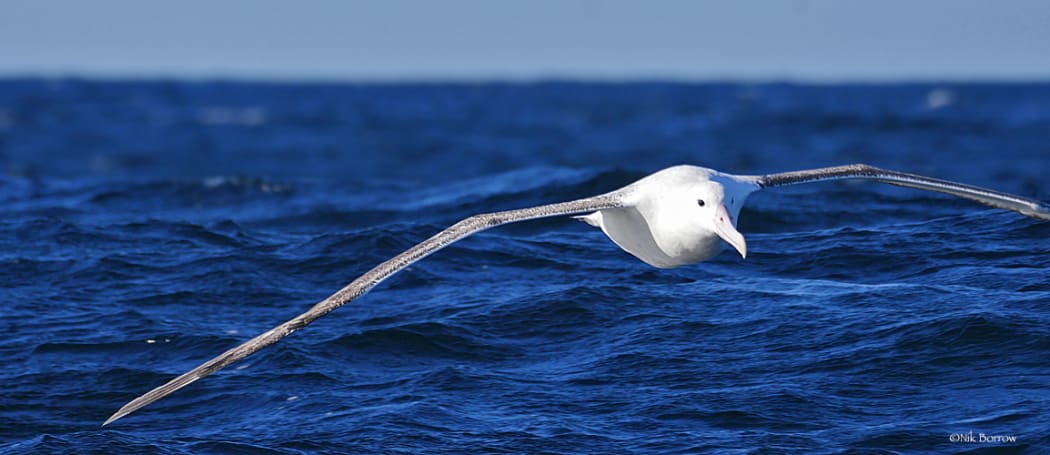
In the past decade, female Antipodean albatrosses have begun spending long periods in the eastern Pacific, where they are at risk from foreign fishing fleets. Photo: CC BY-NC 2.0 Nik Borrow / Flickr
Subscribe to Our Changing World for free on Apple Podcasts, Spotify, Stitcher, RadioPublic or wherever you listen to your podcasts
New Zealand is a seabird hotspot. More than a quarter of the world’s 360 seabird species breed here, and a third of these are found only here.
A third of the seabirds that breed in New Zealand are considered threatened with extinction.
The most recent State of the Marine Environment report for New Zealand, from 2016, is a stock-take of how well we are doing at looking after our oceans.
It says that a key threat for seabirds comes from the fishing industry: “for 2006–07 to 2012–13, five species of seabirds threatened with extinction and six species of seabirds at risk of extinction had a high or very high risk of fishing-related deaths.”
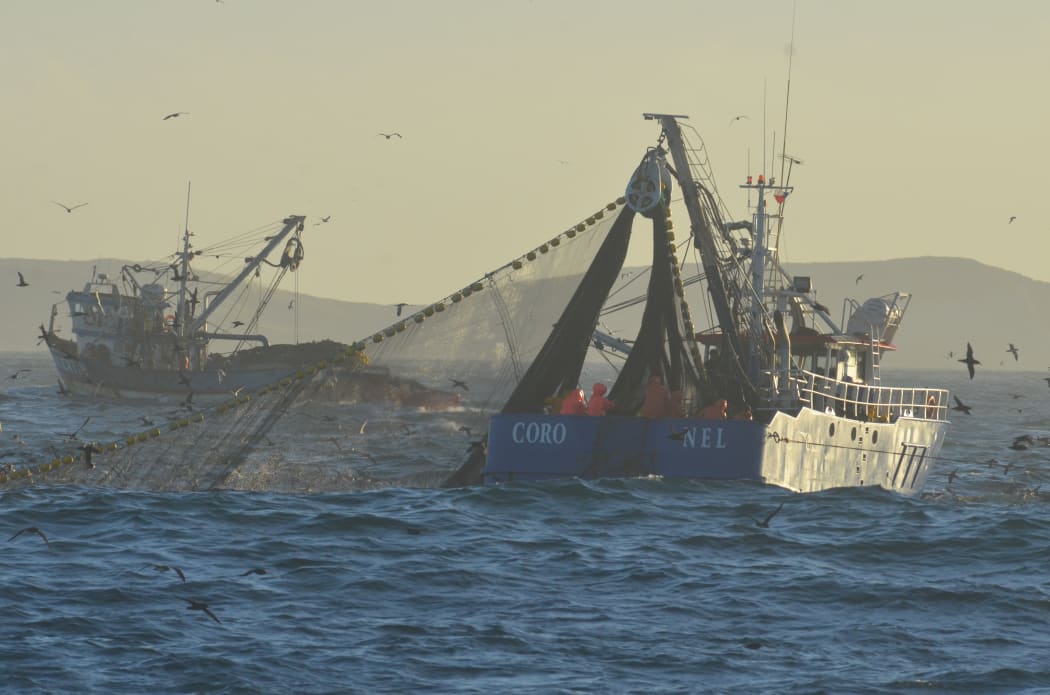
Seabirds feeding on small fish off the coast of Chile fly around the back of purse seine trawlers targeting the same fish, where they risk getting entangled and drowning Photo: ATF / BirdLife International
The report says that in 2003 an estimated 9000 plus seabirds died in New Zealand fisheries. In 2014, just over 5000 seabirds were estimated to have died.
The most commonly caught birds include albatrosses and petrels, some of which are highly threatened.
Antipodean albatross numbers, for example, have declined dramatically in the past decade. There are now only a quarter of the number of breeding females there were in 2004.
Albatross researchers Kath Walker and Graeme Elliott report that “since 2005 most females when not breeding have been regularly visiting the coast off Chile, waters which they rarely visited in the past. Considering the absence of land-based threats, the main cause of high female mortality appears to be fisheries bycatch north of New Zealand and in the central and eastern Pacific between 20-30 degrees south. If this steep and rapid decline continues at the current rate there will be fewer than 500 breeding pairs in 20 years.”
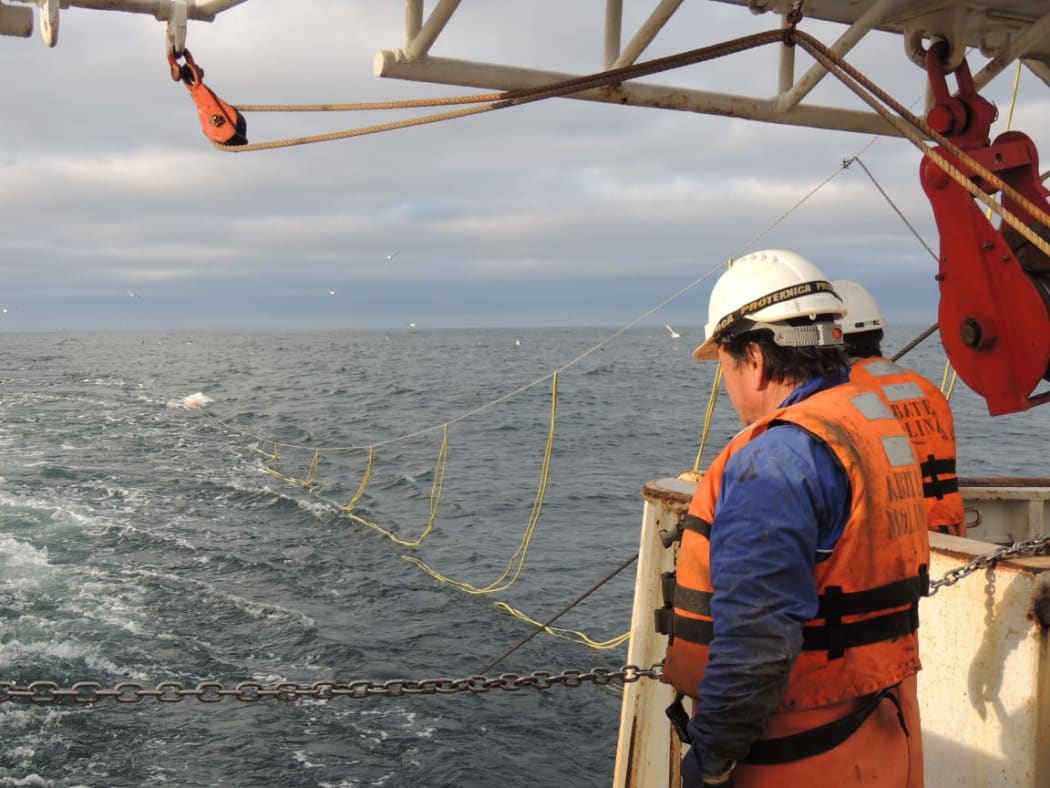
Brightly coloured tori or bird-scaring lines are very effective at stopping seabirds grabbing bait and getting accidentally hooked as commercial fishing boats set their longlines. Photo: ATF / BirdLife International
In New Zealand waters, most seabird deaths occur in the southern bluefin tuna longline fishery, the ling bottom longline fishery and the squid trawl fishery.
New Zealand has put in place mitigation measures to stop the accidental bycatch of seabirds within its Exclusive Economic Zone,
Mitigation measures to reduce the accidental by-catch of seabirds include the use of tori or bird scaring lines to keep birds away from hooks and dangerous cables, weighted lines to make the bait quickly sink below bird reach, and setting lines at night, when birds are less active.
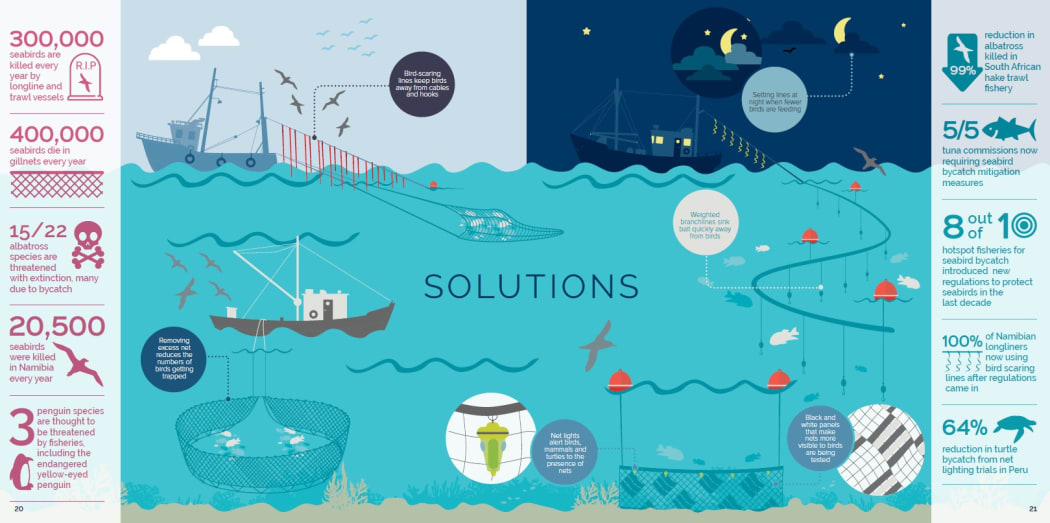
This Albatross Task Force infographic shows some of the ways that fishing boats can avoid accidentally catching and killing seabirds. Photo: ATF / BirdLife International
Forest and Bird seabird conservation advocate Karen Baird says that the problem of seabird bycatch is a global one.
Karen is also Pacific Regional Coordinator for BirdLife International’s Marine Programme, and she says that many New Zealand seabirds leave here after the breeding season.
“They fly off to other parts of the Pacific to overwinter and often to moult. In particular, many of our albatrosses and petrels fly straight across towards South America.”
Karen says that threatened species such as Antipodean albatrosses and black petrels feed in the cold, rich Humboldt Current, which flows up the western side of the continent.
“As they move out of New Zealand, where we know they are at risk from our own fisheries … they start to come into contact with other fishing fleets.”
Saving seabirds in Chile
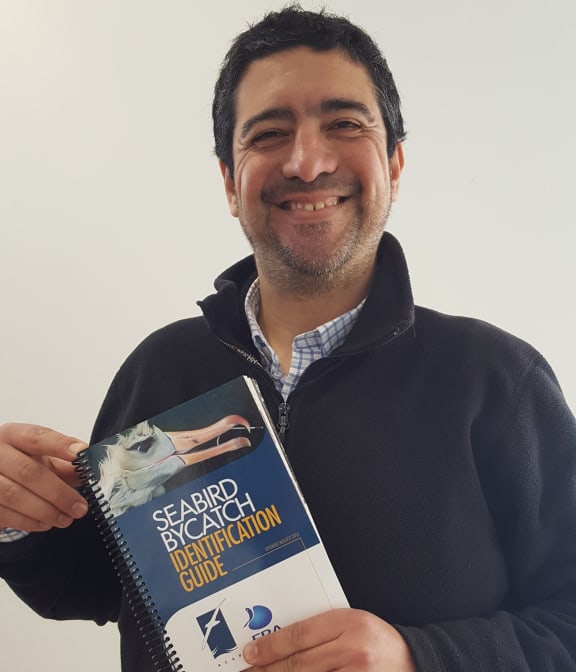
Cristián Suazo works for the Albatross Task Force in Chile. Photo: RNZ / Alison Ballance
Chilean Cristián Suazo works for Albatross Task Force, an international team working with fishers in South America and southern Africa to mitigate, or minimise, seabird deaths.
He is in New Zealand collaborating with seabird experts from Forest and Bird and Te Papa, to update a seabird identification guide. The guide is available in a number of languages. It is made freely available to fishers and fishery observers to improve seabird identification, with the aim of collecting more accurate data about which seabirds are being killed.
Cristián says that Albatross Task Force Chile has helped to develop some effective mitigation measures for South American fisheries. He says they recently received recognition for their work with the purse seine fishery.
Purse seine fishers catch large schools of fish, such as anchovies, by surrounding them with a net and closing it up like a purse. If the net is too baggy and lies on the sea surface, it can accidentally trap seabirds, such as shearwaters, which are feeding on the same fish.
But some simple changes to the net mean that not only are fewer seabirds now being caught, but the fishers’ job has become faster and easier. Cristián says he is pleased about this win-win solution.
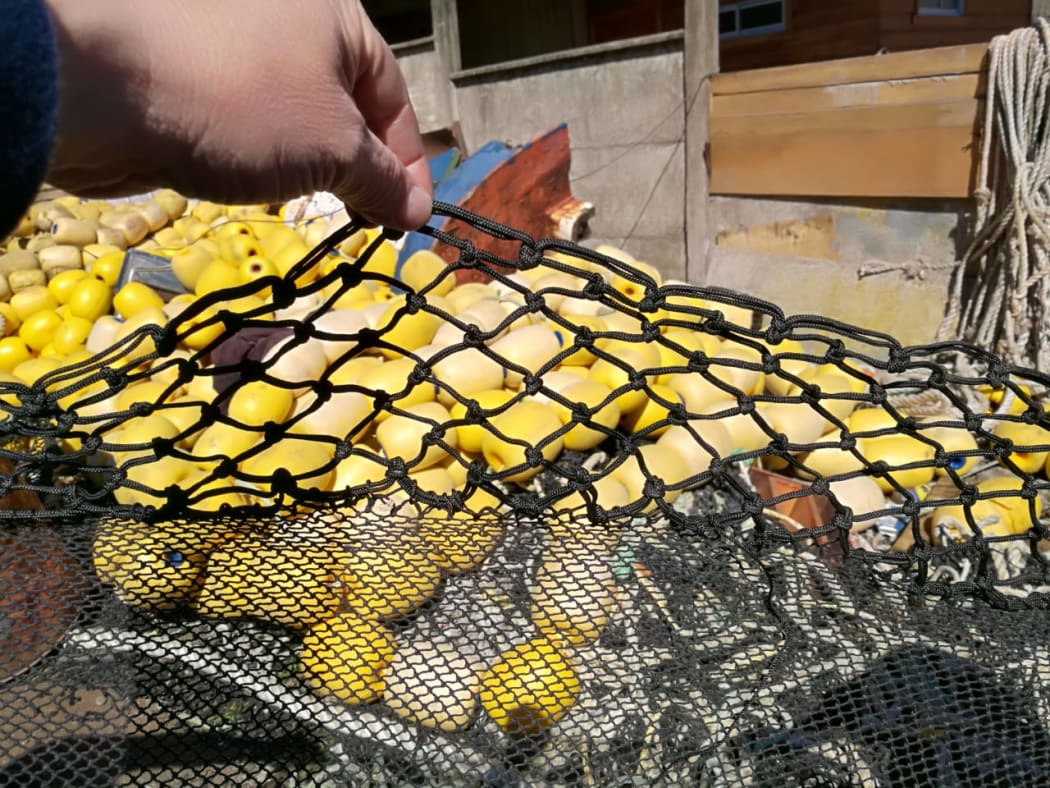
Small changes to purse seine nets, such as the size of some of the mesh, has resulted in a dramatic decline in the number of small seabirds accidentally killed in Chilean waters. Photo: ATF / BirdLife International


